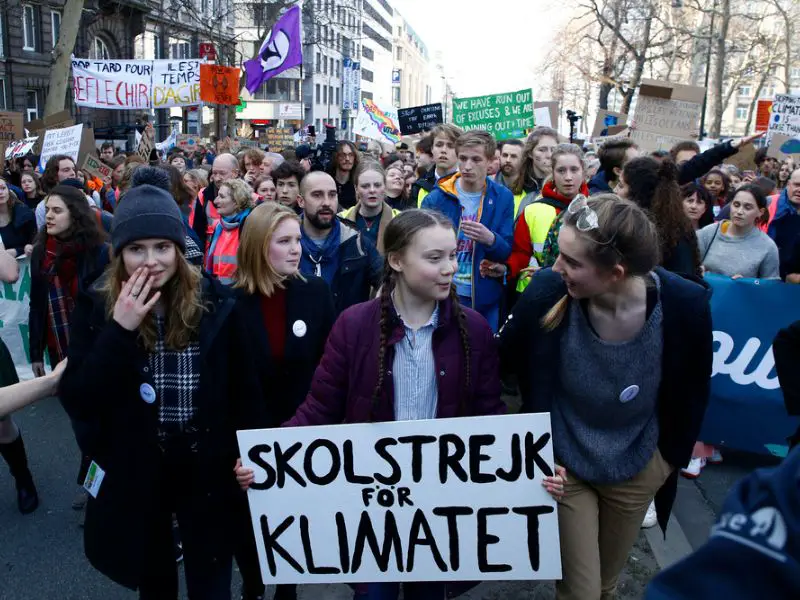Environmentalism is a philosophy or ideology emphasizing the importance of environmental protection. It encompasses the advocacy of measures to protect the natural environment from degradation, destruction, and pollution. Environmentalists typically seek to mitigate the effects of human activities on the environment, including climate change, the depletion of natural resources, and pollution.
The first known awareness of the environment can be traced to 450 BC when thinkers such as Zeno challenged the long-accepted notion that everything in the world was made to use. “The goal of life is living in agreement with nature.” (from Diogenes Laertius, Lives of Eminent Philosophers). When these were put into words, it was probably the start of environmentalism. These thinkers sought to redefine nature as a valuable resource to be protected and used for human benefit.
In this article, we dive into the history of environmentalism, early environmental response, and key catalysts that shaped environmentalism.

Brief History of Environmentalism
The earliest evidence of ecological consciousness appeared in historical documents 5,000 years ago. Vedic sages glorified the untamed woods in their songs, the Taoists stressed that human life should mimic the rhythms of nature, and the Buddha preached compassion for all sentient creatures.
“Environmentalism is not about saving the planet. It’s about saving ourselves.”
– Barbara Ward
In the Mesopotamian epic of Gilgamesh, there is concern over deforestation and the drying of wetlands. When Gilgamesh destroys holy trees, the gods punish Sumer with a prolonged drought, and Ishtar, the mother of the Earth goddess, sends the Bull of Heaven to torment Gilgamesh as a kind of retribution.
In ancient Greek mythology, when Orion, the hunter, promises to kill every animal, Gaia summons a scorpion to slay him. After the unsuccessful attack of the scorpion, Artemis, the goddess of the woods and the ruler of the animal kingdom, shoots Orion with an arrow.
In North America, Letakots-Lesa, the Pawnee Eagle Chief, shared his knowledge with the anthropologist Natalie Curtis. He said, “Tirawa, the one Above, did not speak directly to humans… he showed himself through the beasts, and from them and from the stars, the sun, and the moon should humans learn.”
These human stories undoubtedly contain lifelong lessons about the sacredness of the wilderness, the necessity of exercising self-control, and our moral duty to take care of the natural world.
Early Response to Environmental Consequences
Five millenniums ago, the ancient civilization of Mohenjo Darro (modern-day Pakistan), was already aware of the consequences of pollution on human health and practiced waste management and sanitation. When deforestation in Greece led to soil erosion, The Greek philosopher Plato lamented that “All the richer and softer parts have fallen away, and the mere skeleton of the land remains.” Communities in China, India, and Peru were aware of the consequences of soil erosion and worked to mitigate its effects through terraces, nutrient recycling, and crop rotation.
Hippocrates and Galen, two Greek physicians, first began investigating environmental health issues such as acid poisoning in copper miners. Also, the book “De are, aquis et locis” (also known as “Air, Waters, and Places”) written by Hippocrates is the earliest surviving European book on human ecology.
In 1306, King Edward I placed restrictions on coal burning due to the consequential fog in London. Back in the 17th century, the naturalist and gardener John Evelyn said that London was similar to “the suburbs of Hell.” He made this comparison in one of his works. As a result of these occurrences, governments throughout Europe began to subsidize water and wind power, ushering in the first boom in so-called “renewable” energy.
greatest threat to our planet is the belief that someone else will save it.”
– Robert Swan
And back in the renaissance period, Pieter Bruegel the Elder, a dutch artist, depicted the raw sewage and other forms of pollution emptying into rivers. At the same time, Dutch lawyer Hugo Grotius finished his book The Free Sea, arguing that pollution and war contravene the sacred natural law.
The First Historical Figures That Raise Environmental Awareness
1. Hippocrates
Hippocrates was concerned with environmental cleanliness long before it was viewed as a political or social issue. He believed the human body needed clean air and water for good health. He advocated for proper waste disposal to prevent disease spread through the fecal-oral route and fresh air in open places to promote good digestion. He explained that people’s health was affected not only by what they ate but also by the environmental conditions in which they lived.
2. John Elevyn
John Evelyn was born in 1620 and was an English gardener and writer. In 1661, he addressed a letter to King Charles II, the first letter of its kind outlining the pollution due to the effects of sea coal burning. It’s one of the first known works on air pollution.
He advocated planting expansive gardens to improve air quality. In addition, he suggested relocating polluting businesses, such as fabric dying, soap, salt, and brewing, to places outside the city of London. His writings and pieces helped inspire the environmentalist movement, which has continued to grow ever since.
3. George Catlin
George Catlin was a painter, sculptor, and naturalist who traveled across the American west in the 1830s and 40s to record indigenous tribes and their way of life. While he was an artist first and foremost, Catlin also felt a strong connection to nature and an urge to protect it. He believed that Native Americans were vanishing and that recording the people, lands, and animals was essential. Because of his work, Native Americans gained a voice and were able to share the story of their traditions with the rest of the world.
4. Rachel Carson
Rachel Carson made her mark in history with her virtuous contributions to the environment. She helped raise awareness about the importance of environmental protection. Her book Silent Spring was responsible for lifting the curtain on the real impact of synthetic pesticides on humans and the environment. Her work not only helped promote eco-friendly products but also led to the creation of the federal Environmental Protection Agency in 1970. Her work is remembered today through many conservation efforts across the globe.

Critical Moments That Shaped Environmental History
1970: The First Earth Day
The First Earth Day was celebrated in the United States on this date by an estimated 20 million Americans. It was the largest demonstration of peace in human history up until that time. This day marked the beginning of the environmental movement as people worldwide became aware of the importance of preserving our natural world. Since then, millions have taken action to protect the planet from climate change and other environmental threats.
1980: Recycling Goes Widespread
Although recycling was not a new concept, especially for those who lived through World War II, it received a fresh outlook on life in 1980, when Woodbury, New Jersey, became the first municipality to make curbside pickup mandatory for its citizens.
1985: Discovery of the Antarctic Ozone Hole
The 1985 discovery of the Antarctic ozone hole was a milestone for environmentalists. Using sophisticated technology, scientists discovered huge holes in the ozone layer, which protects the Earth from harmful UV rays from the sun. Scientists were stunned to discover the huge hole and came under fire from skeptics who thought the findings were “hysteria.” However, the ozone hole was verified and confirmed in 1987.
With the discovery, environmentalists were able to accurately measure the extent of the damage being occurred by humans through chlorine and bromine pollution. The discovery led to many international talks and treaties that eventually led to the signing of the Montreal Protocol in 1987.

1997: Hybrid Cars Gain Traction
1997 saw plenty of technological advancements that improved the quality of life for many people worldwide. One of the most prevalent technological inventions was the Toyota Prius launch, a hybrid car that runs on electricity and gasoline. The Prius paved the path for hybrid cars to become more popular, as they became the best-selling hybrid vehicle in the world until 1999.
Hybrid cars have become increasingly popular, with hybrid sales outpacing the overall industry growth. As a result, hybrid vehicles have become ubiquitous in today’s society and have driven many major changes in how people travel.

2006: Vice President Al Gore Educates About Climate Change
Vice President Al Gore made a speech in 2006 to educate the public about climate change, tying together many events over 200 years that have led to global warming. Some of his speeches were the beginning of many environmental groups that began to rise and draw attention to issues around the dangers of climate change.
Related: Technological Solutions to Climate Change, Famous Climate Change Scientists, Best Environmental Volunteering Opportunities
2015: Mapping Out the Great Pacific Garbage Patch
In 2015, researchers mapped the largest trash collection in the Pacific Ocean and found it had thrice the size of France. This patch, known as the Great Pacific Garbage Patch or the Pacific Trash Vortex, contains plastic and trash from as far away as the United States and Asia, even getting fish tangled up in it. The garbage has been estimated to weigh over 80 million kilograms of floating plastic debris. It’s located between California and Hawaii.

2016: The Beginning of the Paris Agreement
Until 2016, many countries had never considered the effects of climate change on society. That year, governments from around the world signed the Paris Agreement, which committed to reducing emissions of greenhouse gases. This treaty and the Kyoto Protocol were the first instances of international environmental policy. While this agreement is in its infancy, it has already been shown to improve the ecological policies of many countries.
2019: Greta Thunberg Ushers a New Era of Activism
Climate change concerns can be traced back to the 1900s when scientists pointed out the effects of rising temperatures and the decreasing levels of oxygen in the oceans. However, it became more mainstream when the Swedish teenager Greta Thunberg started her school strike for the climate. From her activism and words, a new generation has been awakened to the dangers of climate change. Thunberg’s activism has encouraged people worldwide to become environmentally conscious and fight for a cleaner planet.

Author’s Note
History shows that the human race has faced environmental issues for thousands of years, with scientists and activists calling for change for years prior. As the years pass, technology improves, and our awareness grows, we can see the actual effects of our actions on the environment and how each generation plays a role in protecting our planet.
If we’re going to preserve our species and the environment as we know it, we must change our lifestyles for the sustainable solutions we already know before is too late. It’s better to change our lifestyle than to have the world changed for us by climate catastrophe. The Earth does not belong to us. We belong to it.



;?>/smartquizbuilder/includes/images/sqb-registration-img.jpg)



1 thought on “Everything You Need to Know About the History of Environmentalism”